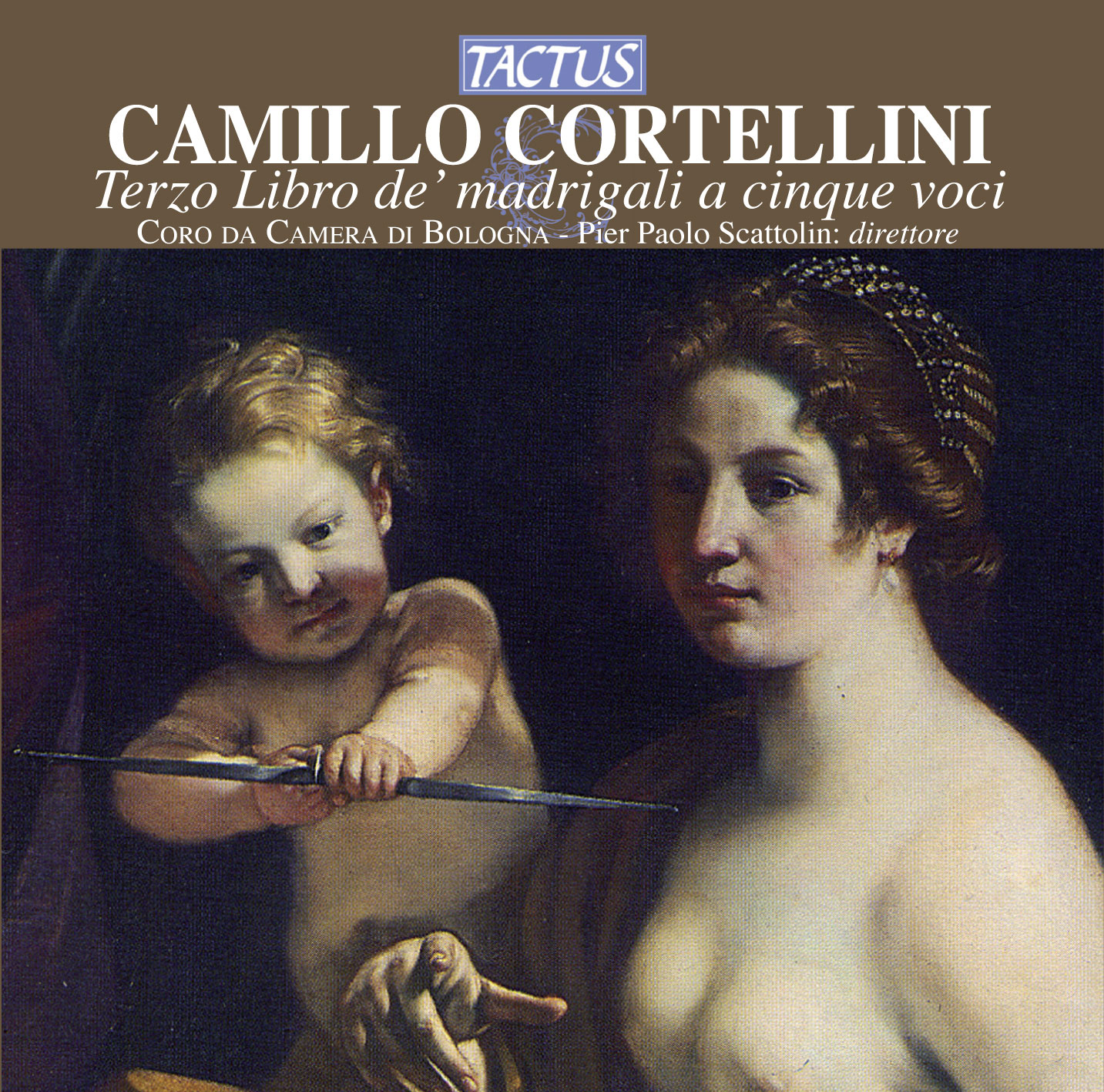CORTELLINI CAMILLO
Camillo Cortellini was born into a musical family in Bologna on 24 January 1561.
His father Gaspare played in the celebrated “Concerto Palatino”, an instrumental ensemble in the service of the Bolognese Signoria.
Camillo inherited the nickname of “violino” since Gaspare was known as “viola” (a nickname the latter had presumably also inherited); in the documents of San Petronio, where the elder Cortellini was employed as cantore, he is registered as “Gaspare Violino”.
After beginning his musical training under his father, Camillo studied the trombone and counterpoint with Alfonso Ganassi, to whom he dedicated his Terzo libro dei madrigali a 5v.
He substituted his father in 1577 as second soprano cornett in the “Concerto Palatino”, and became its director in 1613.
In addition to his activities in that ensemble, he was also active for long periods at the Basilica of S.Petronio as both cantore and trombonist, and he occasionally served as cantore at the chapel of S.Francesco in Bologna as well.
In 1626, he entered into the Accademia dei Filomusi (founded by Banchieri in 1615 as the Accademia dei Floridi).
He also served as maestro di cappella at the Chiesa della Morte in Bologna, so called because it belonged to the Ospedale della Morte next door.
He died in Bologna on 12 or 13 February 1630.
The first two collections of madrigals are now missing partbooks: the only complete version of the Terzo Libro de’ madrigali a cinque voci, recorded here, was printed in Bologna in 1586 by Giovanni Rossi and was dedicated to the composer’s teacher Alfonso Ganassi.
In this collection, the style of the arioso madrigal is clearly exemplified through the qualities of sweetness and soavità.
This approach implies an intentional loosening of the polyphonic fabric, a marked focus on the melodic line (generally given to the highest voice), and the employment of dance rhythms tied to melodic variations in the repeated sections.
Another characteristic aspect of Cortellini’s expressivity is the widespread use of the descriptive stile rappresentativo.
Tracklist
Cortellini, Camillo
Madrigals for 5 Voices, Book 3
1 - La mia vita sete (1:50)
2 - Occhi miei che vedete (1:46)
3 - Filli cara ed amata (1:33)
4 - Dunque, Aminta mio caro (1:28)
5 - 1a parte: Cingami il fronte il più pregiato alloro (3:05)
6 - 2a parte: Serbino scritta i faggi ne le scorze (1:55)
7 - 1a parte: Quasi caduta stella (1:23)
8 - 2a parte: furo nel sen l'ardore (1:26)
9 - Taci, prendi in ma l'arco (2:08)
10 - Amor l'alma m'allaccia (2:47)
11 - Baci amorosi e cari (2:28)
12 - Dolci, soavi e cari (2:06)
13 - Filli, deh non fuggir, deh Filli aspetta (1:46)
14 - Mira, lelia gentil, entro il tuo petto (1:56)
15 - A l'apparir del giorno (1:24)
16 - Tutte le bocche belle (2:23)
17 - 1a parte: Non ape si felice (2:10)
18 - 2a parte: Ben mille fiate e mille (1:47)
19 - Se pur non ti contenti (1:53)
20 - Alza rover serena (2:16)
21 - Se il vigile pastore (2:13)
- Composer: CORTELLINI CAMILLO
- Performers: Coro da Camera di Bologna · Enrico Volontieri: harpsichord · Pier Paolo Scattolin, conductor
- Musicological Text: Pier Paolo Scattolin
- Historical Period: Humanism and Renaissance
- Code: TC 560301
- Edition: November 2009
- Barcode: 8007194104448
- Set: 1
- Total tracks: 21
- Total duration: 00:43:08






